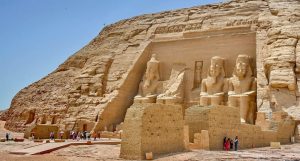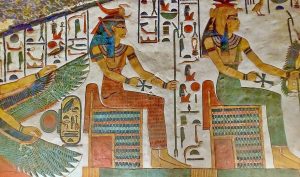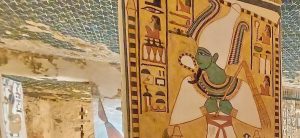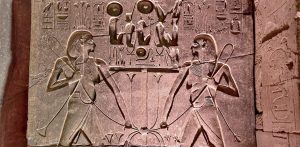Luxor translates to “The Palaces” in Arabic, and it was formerly known as “The City of Hundred Gates.” Many believe it to be the world’s largest open-air museum because it has some of the world’s most magnificent temples and tombs, including the Valley of the Kings, Karnak Temple, Queen Hatshepsut Temple, and Luxor Temple, which house some of the world’s most remarkable structures and treasures.
Luxor lies in Upper Egypt’s south, on the Nile River’s east bank, and is part of the ancient city of Thebes. Luxor was the capital of Egypt during the New Kingdom and a very significant city during the Old Kingdom.
Luxor location
Luxor is a city in upper Egypt on the southern border of the Nile River, over an area of 417 square kilometers (161 square miles), with a population of almost half a million people who rely almost entirely on tourism. It is 670 kilometers from Cairo and takes 45 minutes to fly, 9 hours to train, and 7 hours to get by bus.
Luxor climate
Luxor has a hot and sunny climate, with average temperatures of 40 degrees Celsius (104 degrees Fahrenheit) in the summer and 22 degrees Celsius (71.6 degrees Fahrenheit) in the winter. Millions of people come from all over the world to see all of the wonderful delights that this beautiful city has to offer.
Luxor’s History and Background
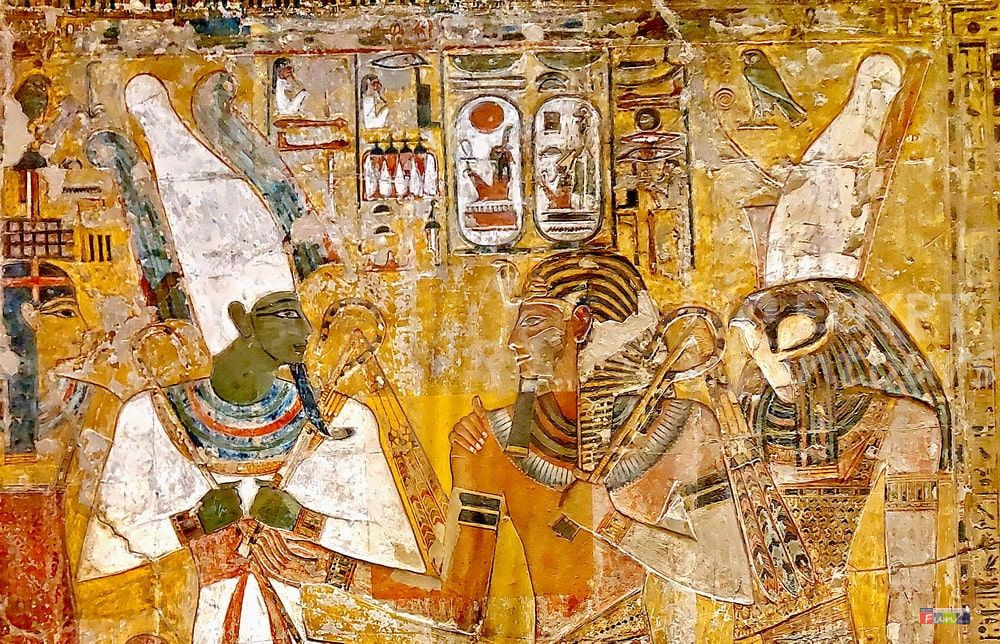
Luxor’s history reveals that the city was deeply religious, as it was known as Thebes, which means “a hundred doors,” and Amun, as it was the worship center for the Theban triad, which included the creator sun god Amun-Ra, his wife, the goddess of truth and justice Mut, and her son Khnosu, the moon god.
Luxor was significant throughout the 11th dynasty, early middle kingdom (2050-1652 BC), 12th dynasty (1938-1756 BC), and subsequently in Egypt’s new kingdom as the city of the gods, with the Karnak temple serving as the official site of devotion for each deity, such as Amun-Re, Mut, and others.
The city’s prominence grew during the early middle kingdom of the 11th dynasty, leading to the new kingdom when it became the capital and a universal center for all political, religious, and military components of Ancient Egypt.
Many kings and queens built temples to honor the gods from the 18th to the 20th dynasties, such as King Amenhotep III, who built the temple of the deity Amon, his spouse, the goddess Mut, and their son Khonsu, the moon excellent A.K. Amon’s power grew greater as he was combined with the sun god Ra to form Amun-RA, who was worshipped in his temple in the Karnak Temples Complex in the late 18th dynasty.
After a period of civil strife and instability, King Akhenaton (1353–1336 BC) attempted to impose monotheism as the law of the kingdom by moving the capital to Amarna and forcing Atonism (the worship of the single deity Aton) on the population, but he failed. During the new kingdom, many kings and queens, such as Ramses II (1279–1213 BC) and Hatshepsut (1507–1458 BC), wanted to immortalize their legacy, and it became customary for any king or queen to be buried in the valley of the kings, which contains 63 royal tombs, including those of Ramses the Great, Tutankhamen,
Thutmose III, Nefertari, and others. Luxor is well-known for Hatshepsut’s magnificent temple, which exemplifies real aesthetic design and classical architecture of the time. Alexander the Great was one of the final characters to add something new to the city, as a granite shrine to him was erected at the Luxor temple.
Even when the Greek, Roman, Coptic, and Islamic eras arrived in Luxor and many churches and mosques were erected close to or even on some of the temples, Luxor remained a window to ancient Egyptian history. Every day, the city of Luxor continues to surprise us with fresh discoveries.
Luxor’s Top Attractions
Luxor’s true uniqueness lies in the number of one-of-a-kind ancient attractions scattered around the city, which led to the city’s designation as a UNESCO World Heritage Site in 1979. The great Colossi of Memnon, the city’s heavenly guardian, stands at the city’s entrance, and the heavenly valley of the king, in the heart of a mountain, contains 63 tombs for royalty and nobles, as well as 20 tombs of kings and queens from the new kingdom period, including the Ramsess dynasty, Tutankhamun, Seti I, Amenhotep I, Thutmose, and many The magnificent valley of the nobles, which has 500 graves of nobility, governors, and tax collectors, as well as wall pictures and wall decorations depicting their everyday lives in great detail, is another remarkable landmark.
Queen Hatshepsut’s magnificent temple, which was erected in 1479 BC, is the most perfect example of ancient Egyptian architecture and one of Egypt’s best-preserved temples. The Great Luxor Temple, also known as the Southern Sanctuary, was constructed around 1400 BCE and is one of Luxor’s oldest and most beautiful temples, dedicated to the Theban Triad. The Great Karnak Temples Complex, also known as the Most Selected of Places, is one of the world’s biggest open-air museums, dedicated to the recording of ancient Egyptian society’s spiritual growth.
Luxor’s Things To Do
There are many exciting things to do in Luxor, including exploring all of the ancient historical attractions throughout the city, as well as visiting shops and bazaars to buy lovely souvenirs, boarding a magnificent hot air balloon, entering the sound and light show, and witnessing the history of ancient Egypt come to life.
Every tourist has the opportunity to join a Nile cruise from Luxor to Aswan, where all of ancient Egypt’s attractions may be thoroughly explored, as well as the spectacular Luxor Museum, which has the rarest collection of ancient Egyptian artifacts. If you like to experience Egypt’s great sites and activities, you may try our finest Egypt tour package, the Nile River Cruise, and book the trip that is most appropriate for you. Alternatively, if you are in Luxor and would like to tour the most famous ancient sites in Luxor, you may go on one of our Luxor Excursions.

